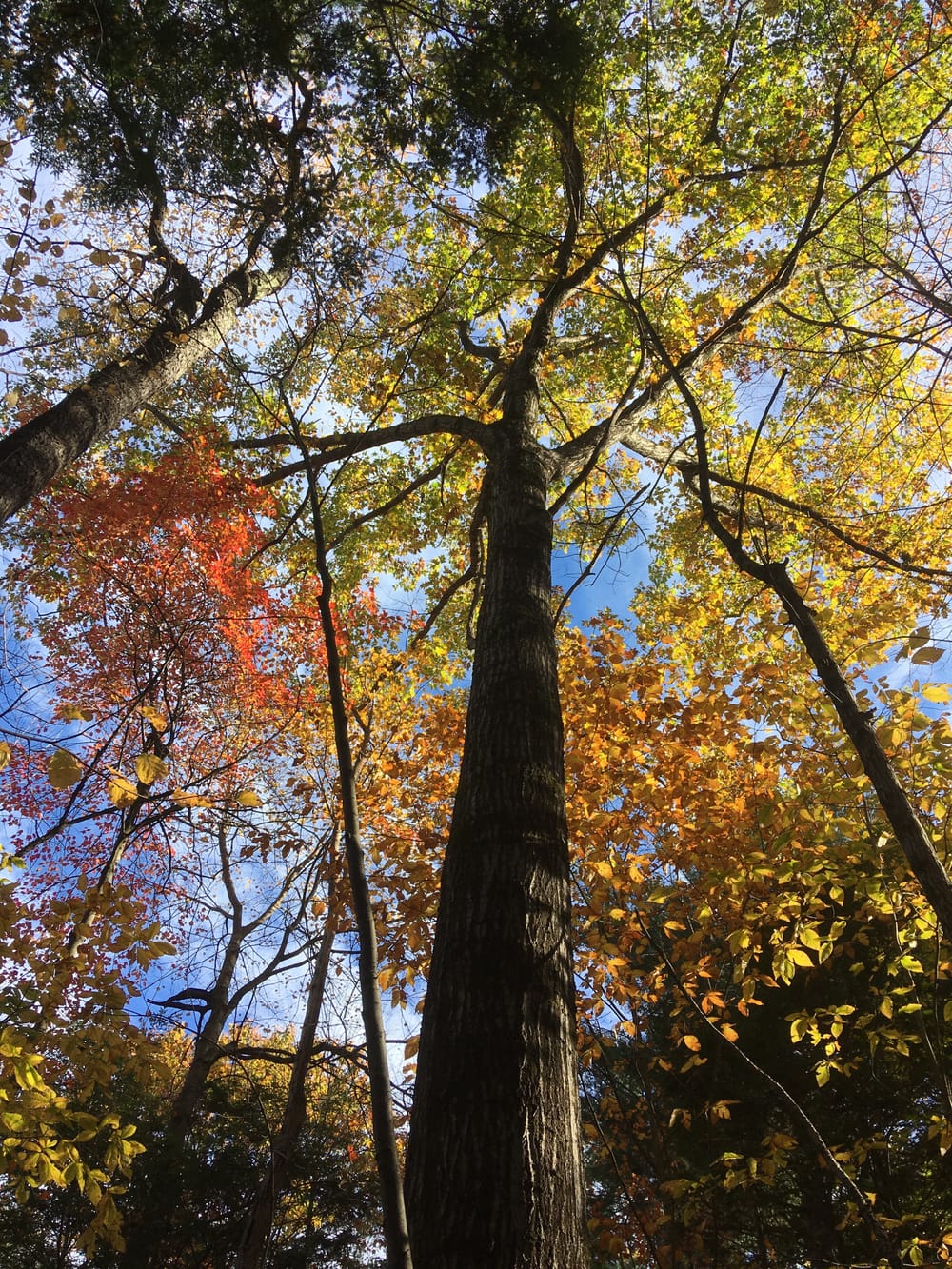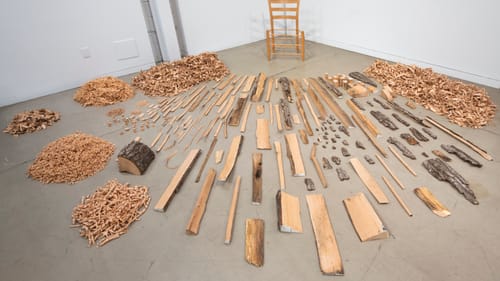Stay in the Loop
BSR publishes on a weekly schedule, with an email newsletter every Wednesday and Thursday morning. There’s no paywall, and subscribing is always free.
Our arboreal family
The Museum for Art in Wood presents To Understand a Tree

There’s a poem I use when I teach 2nd graders—“Arbol de Limón” (“Lemon Tree”) by Jennifer Clement—that ends, “Remember,/the tree is older than you are/and you might find stories/in its branches.” Those words resonated as I toured Gina Siepel’s intimate, soul-searching, multi-media exhibition, To Understand a Tree, at the Museum for Art in Wood.
Siepel, an interdisciplinary artist and woodworker, nudges us to ponder what would happen if we regarded a tree as “you” rather than “it,” as organism instead of object. What might change if we really listened to its stories?
Siepel (she/they) did just that, spending five years observing, notetaking, and photographing a 100-year-old northern red oak tree at a forest and research station in western Massachusetts, where she serves as artist-in-residence for Smith College.
The exhibit includes video installations—one shot over the course of a day, and another over an entire year, documenting the life of the red oak—along with chairs Siepel made from trees felled by weather or killed by invasive insects.
The art of the carving-room floor
They also collaborated with other artists, ecologists, students, and community members. A soundtrack composed for cello (an instrument fashioned from wood and with a similar pitch range as the human voice) by composer Vernon David provides an ethereal accompaniment—echoes of forest and ghost—to Shaker-style chairs, heaps of wood shavings, an array of carbonized pine cones, and pressed leaves with hand-written field notes from Siepel and naturalist Kate Wellspring.
One large corner of the space is given to “One Half Log, Divided into a Chair and Scraps,” featuring a single chair surrounded by everything that remained once that piece of furniture was extracted from the log. There are piles of fine, blond dust like what gathers at the bottom of the pencil sharpener, along with heaps of larger shavings, some coiled, others flat.
There are shims and slats and pegs, hunks of quarter-round wood still bearing the rough skin of the bark, all of it arranged in a stunning corona of textures, shapes, and hues, like rays pointing to the finished object: the chair borne from all that wood and labor.
Rather than positioning the chair as logical outcome, as if a tree’s purpose is to provide humans a place to sit, the installation forces us to look at what’s left on the carving-room floor—varied, artful—and think about how we use the natural world, what we value, and what we waste.

Time, light, and material
A triad of other chairs—also in the simple, slatted, Shaker profile, all made from white ash trees killed by insects—highlights three qualities Siepel finds in wood: time, light, and material.
For the “time” chair, she incised and painted every tenth growth ring; the resulting dark striations remind us that trees document their own life cycles, like a parent making pencil hatches on the door frame to track a child’s growth.
The “light” chair was coated with a photo-sensitive fluid, then placed outdoors, on the stump of the tree from which it came; exposed to the sun, the cyanotype coating darkened in spots and dappled in others, making the chair a living record of how the sun fell on its ancestor white ash.
The third chair, “material,” was made from Oriented Strand Board (OSB), an environmentally sustainable composite developed in the 1960s as a response to wood scarcity caused by over-logging. Paradoxically, this engineered wood—with its strength, durability, and collaged, smushed-together appearance—may be one path between the competing forces of convenience and environmental conservation.
Entering tree-time
In the darkened video room, I sat in one of several Meliae chairs, named for the Greek nymphs associated with the ash tree, and let myself ease into tree-time. The shorter video, a 10-minute loop shot with the camera angled toward the tree’s canopy, captures 24 hours in the life of the red oak.
As the film moved from dawn to dusk, the sun spackled just one edge of the leaves, then washed branches in yellowy-green light. I watched leaves pulse, tremor, and dance with the air. Between them, the background deepened from eggshell to cerulean to cobalt, and finally to a darkness in which I couldn’t discern tree from sky.
Across the room, a longer video with a wider aperture, capturing a year of Siepel’s red oak in its neighborhood: other trees, a carpet of leaves at its base. One moment, autumn: the leaves are cinnamon and ochre. Now winter: branches naked and silvered. Spring comes: a tentative light.
Ten minutes. Twelve months. One hundred years. I thought about humans’ ever-shortening attention spans, about how slowly time crawls if you’re a tree.
What do trees need from me?
Two walls in the gallery hold specimens gathered from the herbarium by Siepel and collaborator Wellspring. Framed on cream-colored paper—leaves and needles of white pine, big tooth aspen, striped maple, each with its particular hue, contour, and clustering—the samples made me think of family portraits, and of how the thing we call “tree” exists in wild, exuberant variation. We only need to look more closely to see the resemblances and the distinctions.
Siepel’s and Wellspring’s handwritten field notes hang near the framed specimens. Honest, intimate, and provocative, the penciled reflections poked me to think about my own relationship with trees—indeed, with all of the non-human world.
“I am here because I need you,” reads a note from January 17, 2021. “I need you for oxygen, fuel, shelter, water, soil, and your broader role of support in the ecosystem. And—for your company."
“What do you need from me?”
In a world roiled by human-caused climate chaos, that’s a question worth asking—not just of a tree, but of every part of this living, seething planet.
At top: a northern red oak artist Gina Siepel observed for five years. (Photo courtesy of the artist.)
What, When, Where
To Understand a Tree. Through July 21, 2024, at the Museum for Art in Wood, 141 N 3rd Street, Philadelphia. Free. (215) 923-8000 or museumforartinwood.org.
Accessibility
The Museum for Art in Wood is an ADA-compliant venue.
Sign up for our newsletter
All of the week's new articles, all in one place. Sign up for the free weekly BSR newsletters, and don't miss a conversation.

 Anndee Hochman
Anndee Hochman